There are numerous AI art generators available out there, but very few come close to Midjourney’s capabilities. Having said that, it’s also true that Midjourney is a premium service that costs $10 per month. Yeah, Midjourney has put an end to its freemium model. So, in this article, we list the best Midjourney alternatives that are mostly free and have a powerful text-to-image model. On that note, let’s jump to the list.
1. DALL-E 3
DALL-E 3 is arguably the best Midjourney alternative that you can use to generate images right now. It has been developed by OpenAI, the company behind ChatGPT. You can use it to create photorealistic images from descriptions in natural language. The company released DALL-E in 2021, and after a year, it came up with DALL-E 2 in 2022. Then in 2023, OpenAI announced Dall- E 3 that can produce extremely detailed and accurate images taking into account even nuanced prompts.
Now, it is far more accurate and realistic in generating images, and it outputs images in 4x better resolution. That said, DALL-E 3 is not free, and you need to have ChatGPT Plus subscription to access it on ChatGPT.
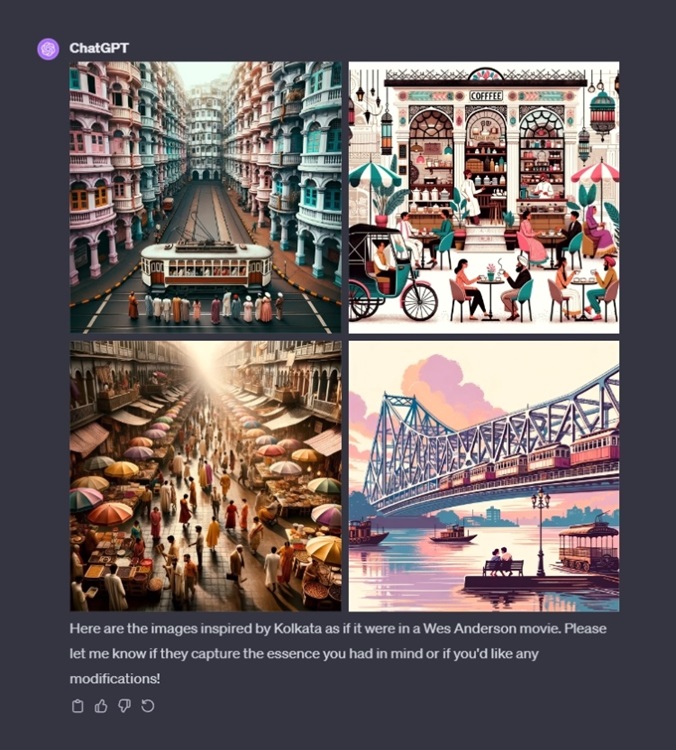
The best part about DALL-E 3 is that it can understand your prompt, just like, and blend various concepts, styles, and attributes to create a unique image that will surprise you. Overall, I think DALL-E 3 is one of the most powerful text-to-image AI art generators out there, and you should try it in place of Midjourney.
| Pros | Cons |
|---|---|
| Accurate and realistic visual translation | Need ChatGPT Plus subscription |
| Expand canvas of images | |
| Built on 3.5B parameters |
Platforms: Web
Check out DALL-E 3 (ChatGPT Plus subscription required)
2. Stable Diffusion XL and SDXL Turbo
If there is a text-to-image model that can come very close to Midjourney, then it’s Stable Diffusion. Unlike Midjourney, which is a paid and proprietary model, Stable Diffusion is a free and open-source model. Plus, it can be installed even on a local PC having at least 8GB of VRAM. Stable Diffusion is already used by many websites and apps to quickly generate images from text input.
Stable Diffusion is developed on Latent Diffusion Models, Eleuther AI, LAION, OpenCLIP, OpenAI’s ADM codebase, CompVis, and more. The company has released Stable Diffusion XL in public, and recently, it also announced SDXL Turbo for real-time, instant image generation.
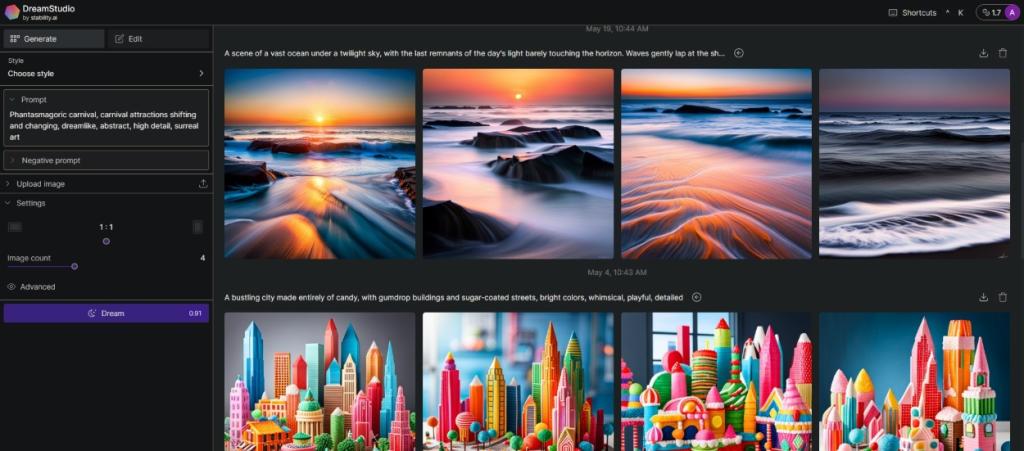
I have used Stable Diffusion multiple times in the past, and it has been fast in generating images. While the generated image quality is still not as good as Midjourney, the latest SDXL 1.0 is trying to bring it on par with Midjourney. One of the key issues with Stable Diffusion is that it can’t render eyes, hands, and fingers properly, making them look abnormal in human portraits. But apart from that, it’s a capable text-to-image model and you should definitely check it out.
| Pros | Cons |
|---|---|
| Free and open-source | Hand and eye rendering still needs work |
| Powerful capabilities | |
| Trained on a large dataset |
Platforms: Web
Check out Stable Diffusion XL (Free or Free) / Check Out SDXL Turbo (Free)
3. Adobe Firefly
In the digital graphics industry, Adobe is one of the foremost companies to have built a great suite of software. And now, in this AI age, Adobe is leaving no stone unturned to innovate and compete with other image-generation models. In an attempt to rival Midjourney, Adobe has released its own creative AI model called Firefly.
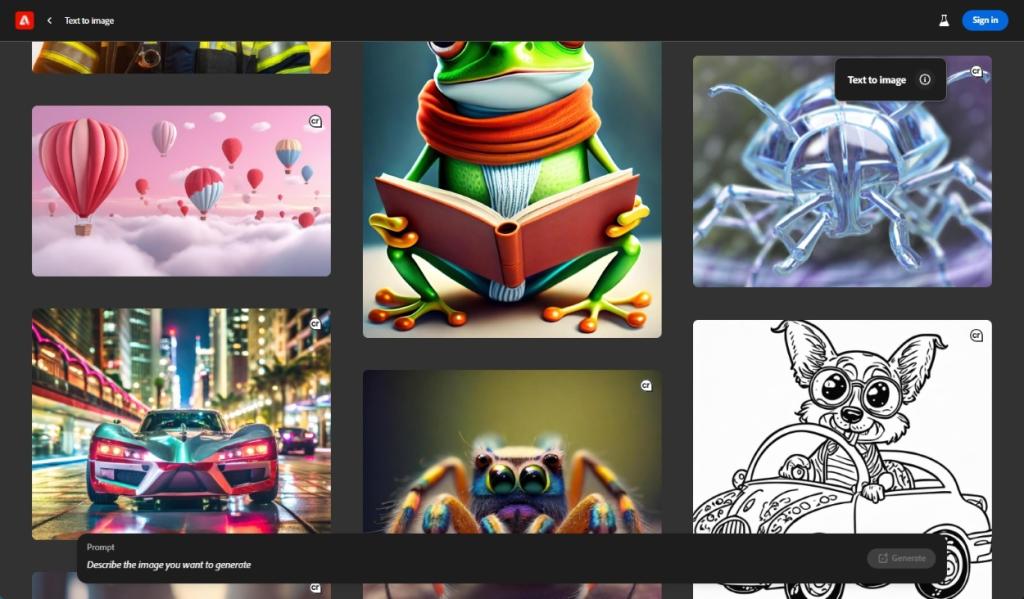
It has a number of tools for text-to-image generation, image expansion, vector recoloring, text effects, inpainting, sketch-to-image, and more. However, most of the tools are still in development, but Adobe has already released the Text to Image tool, and currently, it’s free to all users.
Just like Midjourney, you can enter the prompt in natural language, and it will output four images in different variations. You can choose the content type such as Art, Graphic, Photo, or None. There are also other options like choosing color, tone, lighting, composition, and more. Overall, in my testing, I found it to be fast at generating images and did a decent job at creating landscapes and other concepts. However, for human subjects, it’s not very photorealistic like Midjourney.
| Pros | Cons |
|---|---|
| In-house text-to-image model by Adobe | Still a work-in-progress |
| Has promising features like image expansion and sketch-to-image | |
| Free for now |
Platforms: Web
Check out Adobe Firefly (Free)
4. Bing Image Creator
In case you are unaware, Microsoft has integrated AI image generation into Bing AI Chat, besides the standalone website. You can now generate images with a natural prompt in the Bing Chat interface. However, you must use the “Creative” mode to trigger the Bing AI Image Creator. It’s powered by OpenAI’s DALL- E 3 and 2 models, and there is seemingly no limit on creating images on Bing Chat. Basically, it exists as a free service in Bing Search.
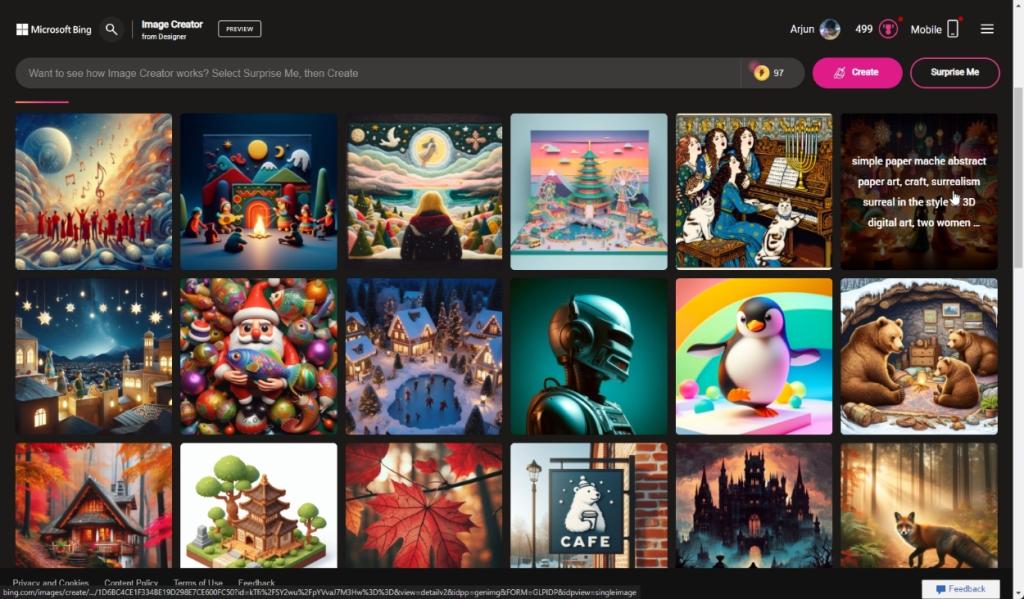
That said, after the first 25 image generations per day, you don’t get quick output results and you need to wait for the final image. Sure, it’s not good at generating human faces, and the quality is a notch lower than Midjourney, but overall, it does a good job at quickly creating AI images even on an abstract concept. So if you are looking for a free alternative to Midjourney, you can very well give Bing Image Creator a shot.
| Pros | Cons |
|---|---|
| Best free AI image generator | Limited customization options |
| Powered by DALL- E 3 and 2 | |
| Integrated with Bing Chat |
Platforms: Web, Android, iOS
Check out Bing Image Creator (Free)
5. Leonardo.Ai
Leonardo.Ai is a hot new text-to-image generation model that is being compared to Midjourney right now. After being in beta for a while, it’s now open to all with access to its in-house models and some proprietary models as well. It has also introduced Alchemy in beta where you can customize the image with presets, change the resolution, adjust contrast and do a lot more.
Leonardo.Ai has been primarily developed to generate game assets, be it environments, buildings, items, helmets, and more. The company has brought multiple artistic tools to quickly generate production-ready visual assets. However, it can be used for any creative tasks.
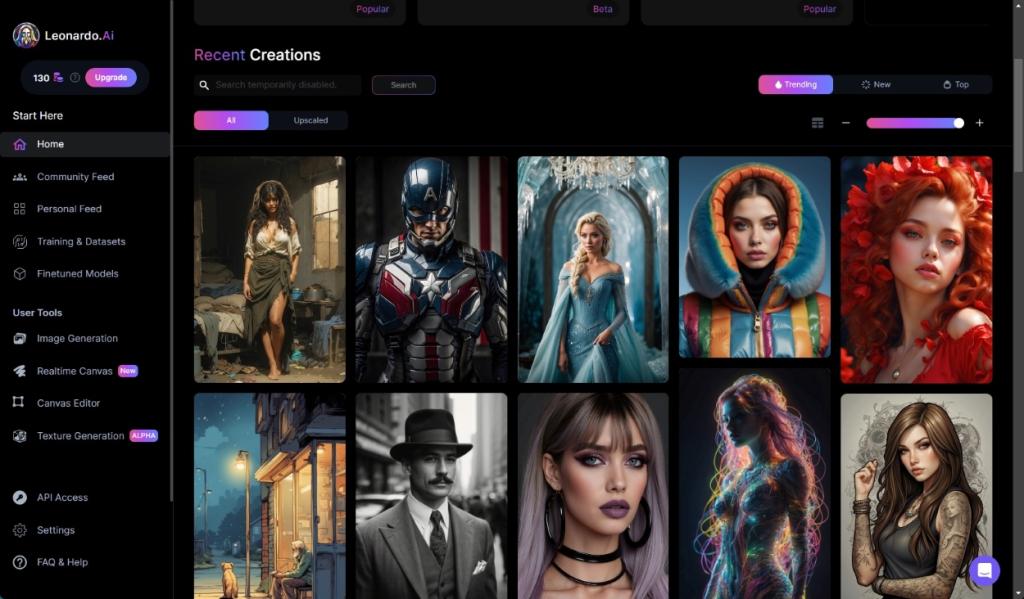
You can even train your own AI model and create images for your personalized environment. What stood out to me the most is that Leonardo.Ai is also good at generating human faces without any blemish in the eyes. So if you are interested in a powerful text-to-image model like Midjourney, Leonardo.Ai is a great alternative.
| Pros | Cons |
|---|---|
| Best for generating game assets | After 150 image generations, you need to subscribe |
| Character portraits are quite good | |
| Custom dimension support |
Platforms: Web
Check out Leonardo.Ai (Free up to 150 images, Paid plan starts at $10 per month)
6. Blue Willow by LimeWire
Blue Willow is an interesting alternative to Midjourney that amassed more than 300 million users on its Discord server in just a few months. It’s free to use for up to 20 images. Blue Willow has now been acquired by LimeWire and you no longer need to join its Discord server to generate AI images. People are using Blue Willow to create logos, characters from comics, digital artwork, landscapes, graphic concepts, and more.

I tried some prompts, and it generated some decent images. But talking about realistic scenes, well, Blue Willow falls short of Midjourney. Nevertheless, for any kind of digital art or graphics, Blue Willow does an excellent job. Though, what I liked the most about this tool is that it generates images within a minute despite the large user base, which is cool. To sum up, Blue Willow is a promising free alternative to Midjourney and you should definitely give it a try.
| Pros | Cons |
|---|---|
| Surprisingly good at generating human faces | Free users can only generate 20 images |
| Free to use; no limitation | |
| Very fast |
Platforms: Web, Android, iOS
Check out Blue Willow (Free)
7. Fotor AI Image Generator
Fotor is an online photo editor, but recently it released its own AI image generator. You can enter text prompts with various details and it will recreate the image using your description. The best part is that it has also launched an image-to-image AI photo generator. Apart from that, you can define your style including Photography, Conceptual art, Anime, Cartoon, Oil painting and more.
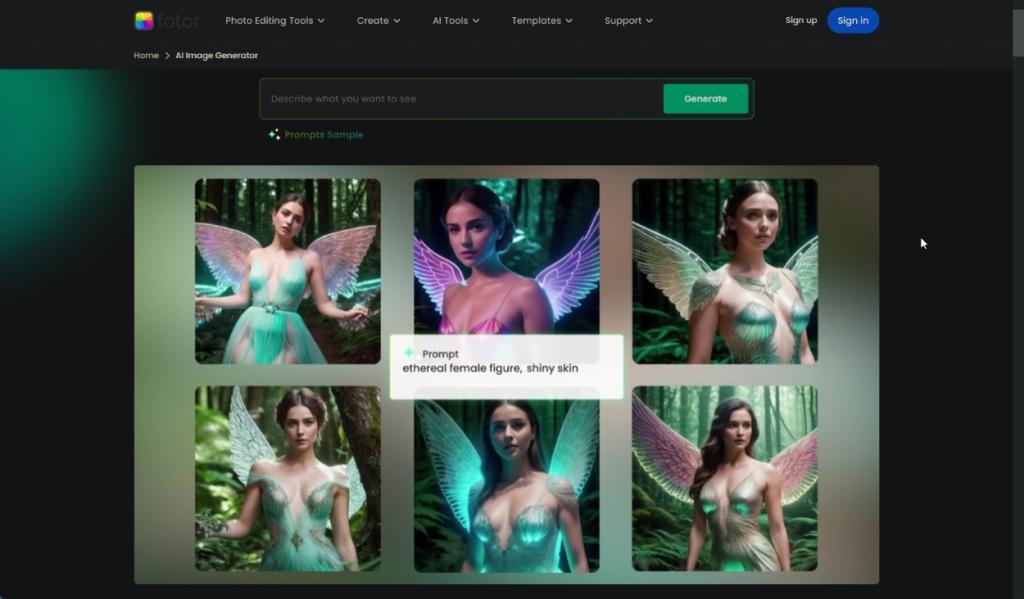
Moreover, there are standard options like customizing the aspect ratio, number of images to generate, further editing and more. As for the availability, well, Fotor offers 5 credits to free users. After exhausting it, you need to buy the Pro plan which costs $2.66 per month. All in all, the generated images are quite good and it comes very close to Midjoruney in conceptual arts.
| Pros | Cons |
|---|---|
| AI image generator is pretty capable | Needs to create an account |
| Good for conceptual art | Only 5 free credits |
| Further image editing |
Platforms: Web, Android
Check out Fotor (Free)
8. NightCafe
Again, NightCafe is not an image model itself, but a website service that lets you access multiple text-to-image models. It supports Stable Diffusion (the latest SDXL 1.0 model too), DALL-E 2, CLIP-Guided Diffusion, VQGAN+CLIP, and Style Transfer. If you want to create masterpieces modeled on old artworks, you can choose Style Transfer; you can pick CLIP-Guided Diffusion for artistic images; and pick VQGAN+CLIP to generate beautiful sceneries.
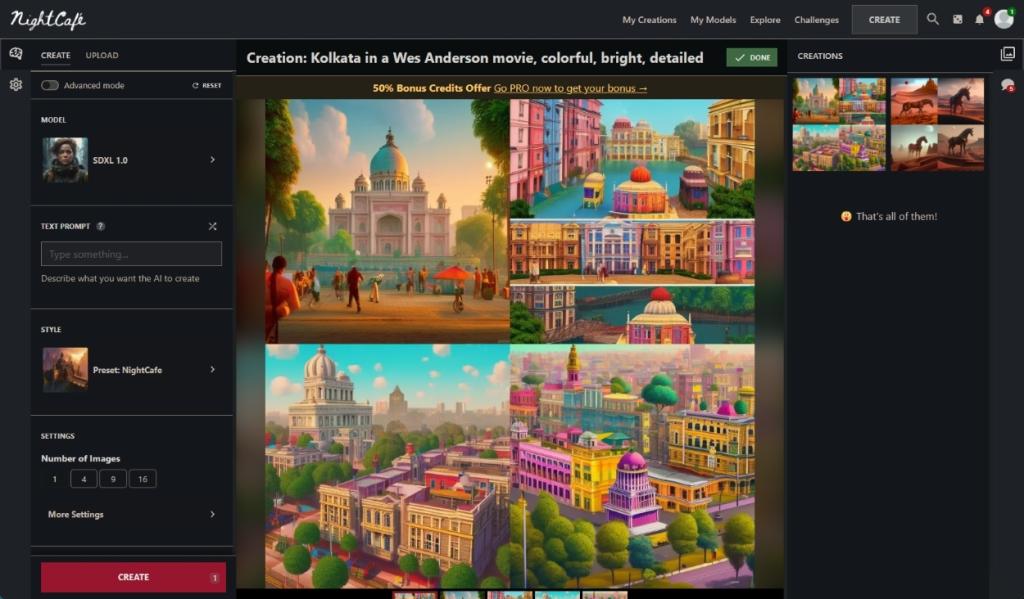
Then, there are Stable Diffusion and DALL-E 2 models for next-generation image synthesis. Having said that, the website is not entirely free to use. You only get 3 free credits on sign up, and you have to pay or earn credits through social campaigns to use other advanced models. Simply put, NightCafe is another service that you can try to compare various image models.
| Pros | Cons |
|---|---|
| Very capable text-to-image model | Not entirely free |
| Stable Diffusion and DALL·E available | Multiple limitations |
| Best for creating old masterpieces |
Platforms: Web
Check out NightCafe (Free up to 3 credits, Paid plan starts at $4.79/ month)
9. Lexica
Lexica is an AI-image generator website that has finetuned its own image model based on Stable Diffusion. Its next-generation model is Aperture v3.5 and it’s great at creating portraits. It also acts as a search engine for Stable Diffusion-generated images. You can use it to generate 100 AI images per month without paying any charge. And for $10 a month, you can generate as many as 1000 images in a month.

Anyway, moving to image generation, you can use its Lexica Aperture v3.5 or v2 model and choose the dimension up to 768 x 1152. In my brief usage, Lexica performed pretty well and came up with high-quality images. If you want to use an AI image generator like Midjourney for free, this Stable Diffusion-powered Lexica model is a promising place to start from.
| Pros | Cons |
|---|---|
| Effortless to use | A little slow to generate images |
| 3 models are available | |
| Generate 100 images per month for free |
Platforms: Web
Check out Lexica (Free up to 100 images/month, Paid plans start at $10/month)
10. Playground AI
Playground AI is another fantastic AI image creator website that hosts its own Playground v2 model, Stable Diffusion XL and Stable Diffusion 1.5. The best part about Playground AI is that it lets you create 500 images per day for free, which is just bonkers. However, you can’t use the DALL-E model under the free version, and there might be some limits on quality and details after 50 images.
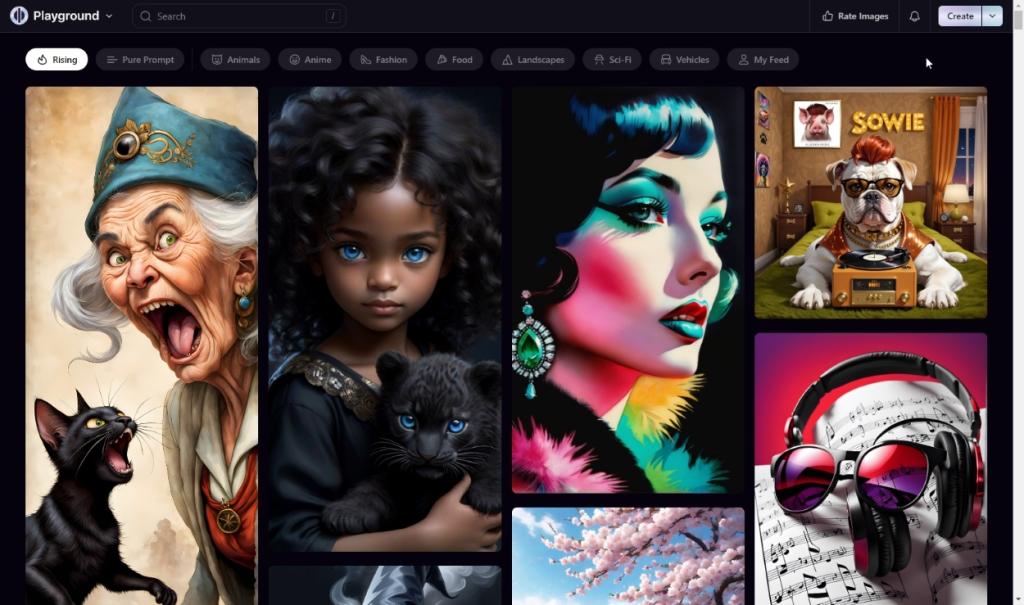
In addition, you can’t change the image dimension from 515 x 512 or 768 x 768. But despite the limitations, it’s still a fantastic choice for newbies. The image generation is quick, and it does not keep you in a queue. To conclude, users who want to try a free alternative to Midjourney, Playground AI might be the one you are looking for.
| Pros | Cons |
|---|---|
| Generate 500 images per day for free | Free users can generate only one image at a time |
| Stable Diffusion XL and 1.5 are available | Plenty of limitations for free users |
| Pretty quick at generating images |
Platforms: Web
Check out Playground AI (Free up to 500 images/ day, Paid plan starts at $15/month)
So these are the top Midjourney alternatives that you can use to generate incredible AI images. Besides some foundational models like Stable Diffusion XL and Dall- E 3, some companies have also built their own in-house models so check them out for different styles and variations.
Apart from that, instant text-to-image models are also gaining traction similar to SDXL Turbo. In our step-by-step guide to using Midjourney, we’ve explained how you could leverage the potential of its powerful text-to-image model. Let us know which Midjourney alternative surprised you in the comment section below.
Roblox Is Unbreakable Codes (October 2024)
Android 15 Officially Released With Private Space And App Pairs
How To Reboot An Android Phone


